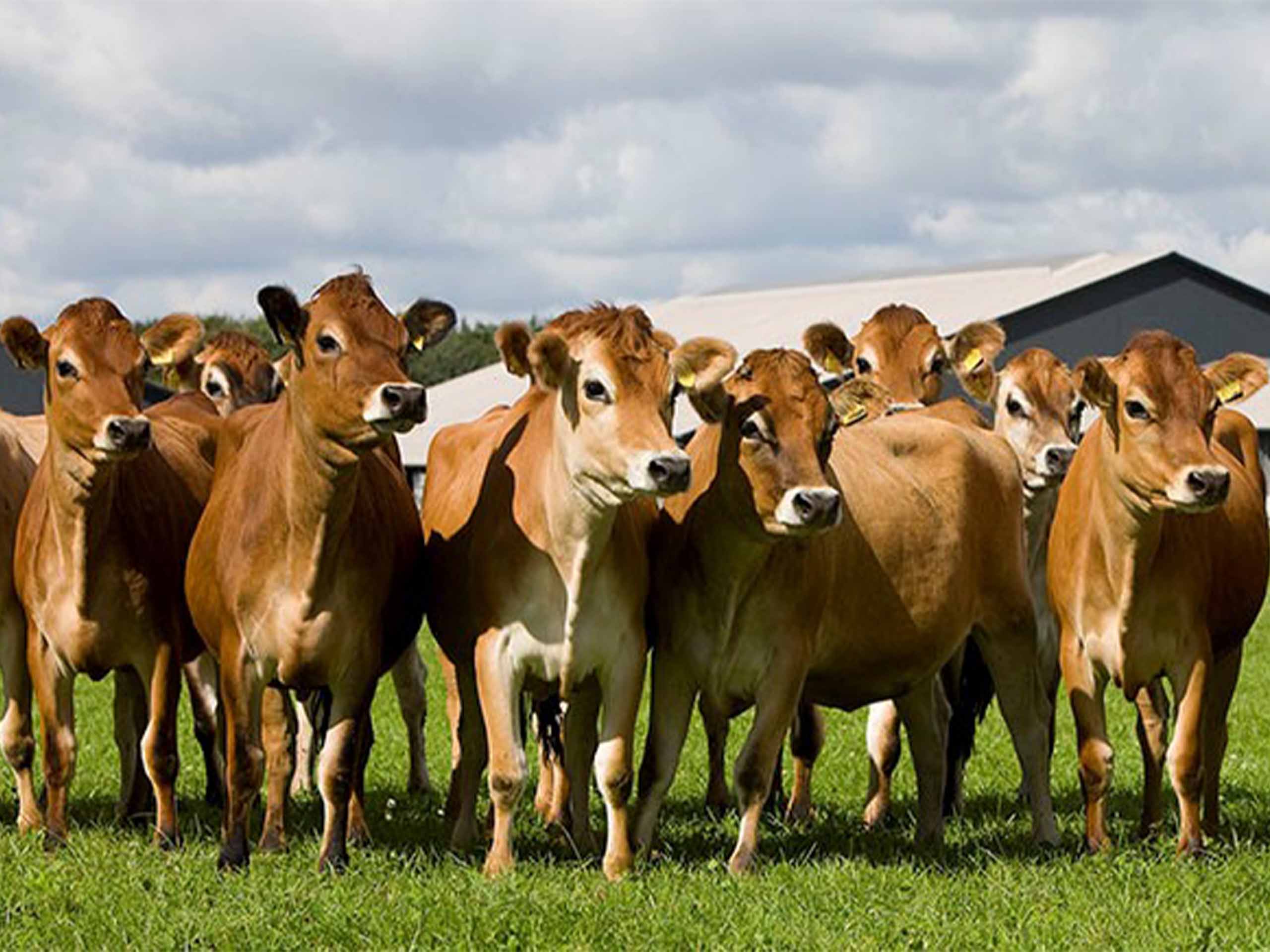SIMMENTAL
The Simmental breed, originating from Switzerland, is one of the oldest cattle breeds globally and is highly regarded for both milk and beef production. With a worldwide population of around 41 million, Simmental cattle are known for their versatility and productivity.
The Fleckvieh breed, commonly found in Germany, is a strain of Simmental, with “Fleckvieh” roughly translating to “spotted cattle.” Another well-known strain is Pie Rouge, popular in France, which also descends from the Simmental breed.
Simmentals display coats in various shades, usually red-and-white or gold-and-white. A defining feature is their white faces, which are consistent even in calves with partial Simmental ancestry.
Mature Simmental cows typically weigh around 900 kg, while bulls can reach up to 1,300 kg, making them large-framed and well-muscled animals. Depending on their breeding, Simmental cattle may be horned or polled, which is important for farmers to consider, as dehorning can be distressing for both cattle and handlers.
Adapted to survive harsh Alpine winters, Simmentals are also well-suited to Ireland’s temperate climate, which lacks extreme temperature variations. They are generally praised for their robust physical traits, such as pigmentation around the eyes, which prevents sun-related issues, and udder health, with few problems reported.
Many farmers find Simmental cattle to be docile and easy to handle, though dams are known to become protective when defending calves—a positive trait for herds in areas with young cattle safety concerns. Bulls, however, can be aggressive, so caution is always advised. For guidance, see our Bull Safety article.
Simmentals also have an impressive lifespan compared to other continental breeds, which helps reduce herd replacement costs. Their long fertility period and minimal calving intervals add to their appeal. Additionally, Simmental cows are known for ease of calving, making them ideal for single-person farms.
Efficient in feed conversion, Simmentals are recognized for rapid growth and early maturation, regardless of pasture conditions. According to many owners, they rank as the top breed for combined milk yield and weaning gains. Their carcass yield is around 57.2%, and the daily weight gain averages 1.44 kg, based on European research.
The breed is renowned for its high beef yield, with an excellent meat-to-waste ratio and well-marbled beef, which enhances tenderness and marketability. Even half-Simmental cattle inherit these advantageous beef qualities.
In terms of dairying, Simmental cows are highly esteemed for ease and speed of milking. Their high milk yields also contribute to healthier calves in suckler herds. The first lactation typically yields around 6,000 kg of milk, increasing to about 9,000 kg in subsequent lactations. Simmental milk averages 3.7% protein and 4.2% fat, making it an ideal choice for dairy farmers.










